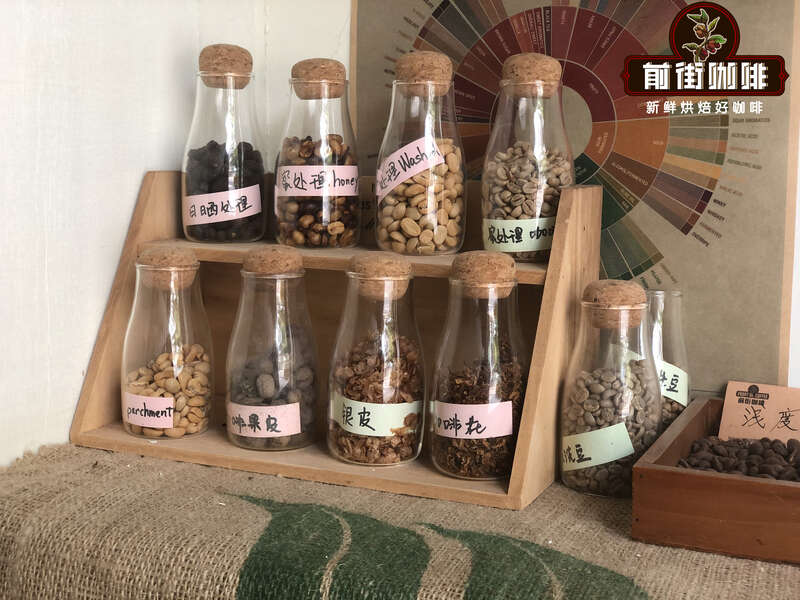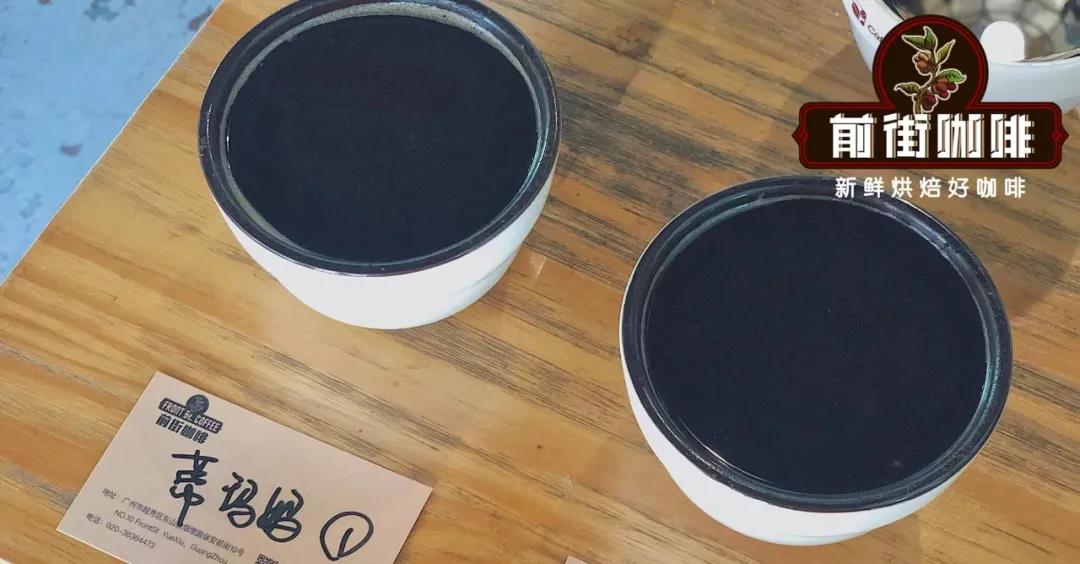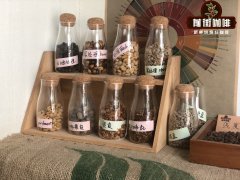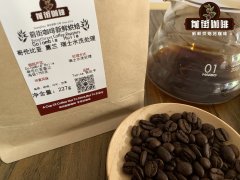Proportion of Timani Girl Coffee Bean Powder cooked with AA Coffee beans in Neri Nyeri production area in Kenya

Professional coffee knowledge exchange more coffee bean information please follow the coffee workshop (Wechat official account cafe_style)
Front Street Coffee-Kenya Timani Girl AA Coffee Bean
Production area: Neri Ndima-ini processing Plant
Altitude: 1700-1900m
Variety: SL28&SL34
Treatment: K72 washing
Production season: 2020
Grade: AA

Neri producing area
Nyeri
Neri, close to Mount Kenya's high mountains, is an important Kenyan boutique producing area, with an average elevation of more than 1500 meters. A lot of Kenyan coffee is produced in this area. Neri is high enough above sea level and located east of Aberdare Mountains, and it is also the headland between Mount Kenya and this mountain. due to its high terrain and fertile soil, Neri is an important town in the middle of Kenyan coffee, and coffee-related industrial facilities are also well developed.

The high-altitude Kenyan coffee beans in the region are famous for their high level. the coffee beans produced in this area have dark berry flavor, bright sweet and sour plum and long-lasting finish. There are two harvests in this area, and the coffee quality in the main production season is higher: October to December is the main production season, June to August is the by-product season.
Entani processing plant
Ndima-ini
The treatment plant is part of the Gakuyu cooperative. The Gakuyu cooperative broke away from the large Mathera cooperative in 1996 and became a family of its own. The Gakuyu cooperative has only two factories, Ndima-ini and Kirigu.

Over the past 20 years, about 850 small farmers have transported ripe coffee fruit to the Ndima-ini processing plant and handed it over to John Karma, the plant manager. The Kenyan Timani girl made from Qianjie Coffee is different from the previous 72-hour fermentation water washing method in Kenya. The coffee bean is soaked and fermented for 80 hours on the original basis, and finally dried naturally on a high drying bed.
Coffee variety
SL28&SL34
SL28 is a single variety selected from the drought-resistant population of Tanganyika in 1935. SL28 varieties are suitable for middle and high altitude areas and have the ability of drought resistance, but they are very sensitive to the main diseases of coffee. The appearance of SL28 bean is similar to that of bourbon variety, and it is round and thick. In recent years, genetic tests have confirmed that SL28 belongs to the bourbon gene group.

SL34 was first selected at the Scott Agricultural Laboratory in Kenya in the late 1930s. SL34 was selected from a tree in the Kabete Loresho property in Kenya, which is called the "French missionary". The appearance of SL34 beans is similar to that of iron card varieties, and the beans close to the shape of iron card beans are screened from Kenyan beans in the front street. The beans are long and oval in shape and look flat on the side. In recent years, genetic tests have shown that SL34 is related to the genome of iron pickup.

Coffee bean treatment
K72
Although the profile of this coffee bean from Qianjie says Kenya's 72-hour fermentation water washing method, it actually ferments for 80 hours, so the acidity of this coffee bean is more obvious than the previous 72-hour fermentation.

The bean was treated repeatedly after fermentation and harvested after the same day. The best coffee berries were selected for peeling and fermentation. The fermentation time was 24 hours and washed with clean river water after 24 hours. Then, it is fermented again with clean river water for 24 hours, then washed, and repeated 3 times to reach 72 hours, so it is called Kenyan 72-hour fermentation water washing treatment, referred to as [K72]. Then the 80 hours just mentioned increases the fermentation time on the basis of each fermentation according to the ambient temperature at that time.
Qianjie believes that coffee beans treated with 72-hour fermentation water in Kenya are fermented for a long time at low temperatures and finally dried and dehydrated, giving the beans a brighter, cleaner and fuller flavor.
Suggestion on coffee baking in Qianjie
The front street baker uses Yang family 800N semi-direct fire, the amount of beans is 480g: the furnace temperature is 165 degrees Celsius, the throttle is 3, and the firepower is 120. Temperature recovery point: 1 temperature 39: 32 ". When the temperature rises to 140C, the throttle opens 4. Bake to 625", the temperature is 153.3 degrees, the bean surface turns yellow, the smell of grass disappears completely, and the dehydration is complete.

When the bean surface appears ugly Hu wrinkles and black markings, the smell of toast obviously changes to the smell of coffee, which can be defined as a prelude to an explosion. At this time, it is necessary to listen carefully to the sound of the explosion point. When the throttle door remains the same, the firepower of 188 degrees is reduced to 90 degrees. "the development time of an explosion is 2: 10" and put into the pot at 194 degrees.
Coffee cup test report on Qianjie
Qianjie Coffee will be tested within 8-24 hours after the sample beans are roasted. Baristas in front of the street generally use ceramic bowls with a capacity of 200ml, which will be marked with 150ml and 200ml marks. According to SCAA standards, the TDS of water is about 150ppm, TDs is too low will easily cause excessive extraction, too high will affect the taste and easy to lack of extraction, the water temperature used in the cup test is 94 °. The pass rate of 20 # standard screen (0.85 mm) controlled by grinding degree is 70% Mel 75%. Ratio: 11 grams of coffee powder and 200 milliliters of hot water, that is, 1VR 18.18, so that the concentration of the extract is exactly within the range of 1.15% Murray 1.35% gold cup, and the soaking time is 4 minutes.

Dry incense: plums
Wet fragrance: berries
Flavor: plum, plum, caramel, cream, grape
Experience of brewing coffee in Qianjie
Filter cup: V60 # 01
Water temperature: 90 degrees
Powder content: 15g
Ratio of powder to water: 1:16
Degree of grinding: medium fine grinding / BG#6S (sieve powder in No. 20 sieve bowl to 77%)

The front street cooking technique: first wet the filter paper and preheat the filter cup and the coffee pot. Steam with 30 grams of water for 30 seconds, small flow circle injection to 130 grams, continue to inject water to 240 grams when the water level is about to be exposed to the powder bed, remove the filter cup when the water level is about to expose the powder bed, (steaming starts timing) the extraction time is 2: 00 ".
Cooking flavor: the sour quality of imported black plum, grapes in the middle, and sweet and sour plums in the end.
For more boutique coffee beans, please add private Qianjie coffee on Wechat. WeChat account: kaixinguoguo0925
Important Notice :
前街咖啡 FrontStreet Coffee has moved to new addredd:
FrontStreet Coffee Address: 315,Donghua East Road,GuangZhou
Tel:020 38364473
- Prev

Description of coffee brewing flavor characteristics of Yejia Fico snow map, high scaffolding, sun-dried coffee beans, snow map
Professional coffee knowledge exchange more coffee bean information Please pay attention to the coffee workshop (Wechat official account cafe_style) Preface since the introduction of washing treatment in 1972 because of the fresh and refined flavor of the washed coffee, it has been loved by everyone. A coffee merchant saw that the water washing treatment was about to bury the traditional sun treatment, so he launched it in 2006.
- Next

How does coffee packaging maintain the flavor of coffee beans? why does the aroma of coffee beans dissipate?
The roasting of coffee takes time, effort and a lot of trial and error to release the flavor of coffee. However, after the baking is completed, it is also necessary to ensure that consumers can feel the flavor of the coffee while drinking it. This is where packaging works. By using the correct packaging material, the aroma of coffee can be preserved long enough for consumers to experience the release of roasting.
Related
- Beginners will see the "Coffee pull flower" guide!
- What is the difference between ice blog purified milk and ordinary milk coffee?
- Why is the Philippines the largest producer of crops in Liberia?
- For coffee extraction, should the fine powder be retained?
- How does extracted espresso fill pressed powder? How much strength does it take to press the powder?
- How to make jasmine cold extract coffee? Is the jasmine + latte good?
- Will this little toy really make the coffee taste better? How does Lily Drip affect coffee extraction?
- Will the action of slapping the filter cup also affect coffee extraction?
- What's the difference between powder-to-water ratio and powder-to-liquid ratio?
- What is the Ethiopian local species? What does it have to do with Heirloom native species?

